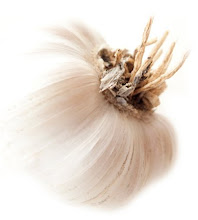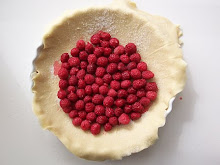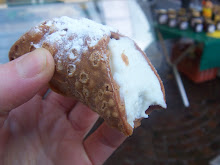
My time in Italy has now compressed to a collective of memories. Memories of food and friends, markets and restaurants and local and seasonal prodotti tipici.
Thankfully, food allows me to go back to a particular place in time and taste the memory all over, as if I was right there and then. Take this winter salad, for example: I was living in Firenze as part of my internship. Almost everyday would start in a short stroll to the market on the way to work. I’d fill my reusable bag with seasonal goodies in preparation for dinner and upon my return from work, in the early hours of the evening, I’d experiment in the shoebox that was my kitchen.
This is what this salad tastes of and it proved itself a keeper, standing the test of time. I recently made and wrote about on my weekly column and here it is again, worthy, in my eyes, of another post. It has Italy in autumn written all over it, and while you may say fall is long gone, the weather in this part of the world resembles a mild fall, even now, on the threshold of February.
When chestnuts are in season this salad can either serve as a side dish or a light meal in itself. The Gorgonzola melts into the hot lentils and coats the salad in a rich creamy dressing. Combined with the chestnuts and shallots, its nothing short of a celebratory nostalgic get- together in my mouth.
As per usual, the key to a fine result depends on the quality of the raw ingredients, ie. You might want to invest in raw chestnuts that require attentive boiling and peeling and a good Gorgonzola.

Puy lentils, chestnuts and gorgonzola salad
serves 2-4
400 grams chestnuts, with a shiny, tight, dark brown skin
1½ cups puy lentils
1-2 bay leaves
2-3 shallots or 1 red onion, chopped finely
75 gram Gorgonzola (dolce or piccante, as you like), crumbled
Sea salt, to taste
Freshly ground white pepper, to taste
Extra virgin olive oil
1 tsp rosemary needles
With a sharp knife make an X cut in the skin on the flat side of each chestnuts.
Simmer in a pan with boiling water for 15 minutes.
Peel the chestnuts taking care to remove both the outer shell as well as the inner brown membrane. It's much more simple to peel them when they're still hot, so work in small batches, keeping the chestnuts in the hot water.
Place the lentils in a saucepan and cover with water. Add the bay leaves, cover and bring to a boil. Allow to simmer for 20 minutes, until the lentils are soft.
Strain the cooked lentils and place in a bowl.
While the lentils are still warm add the peeled chestnuts, chopped shallots and the Gorgonzola cheese. The hot lentils will cause the cheese to melt into a thick dressing. Stir well.
Season with salt, pepper and olive oil, taste and adjust seasoning, if needed.
Sprinkle the rosemary on top and serve, still warm.















